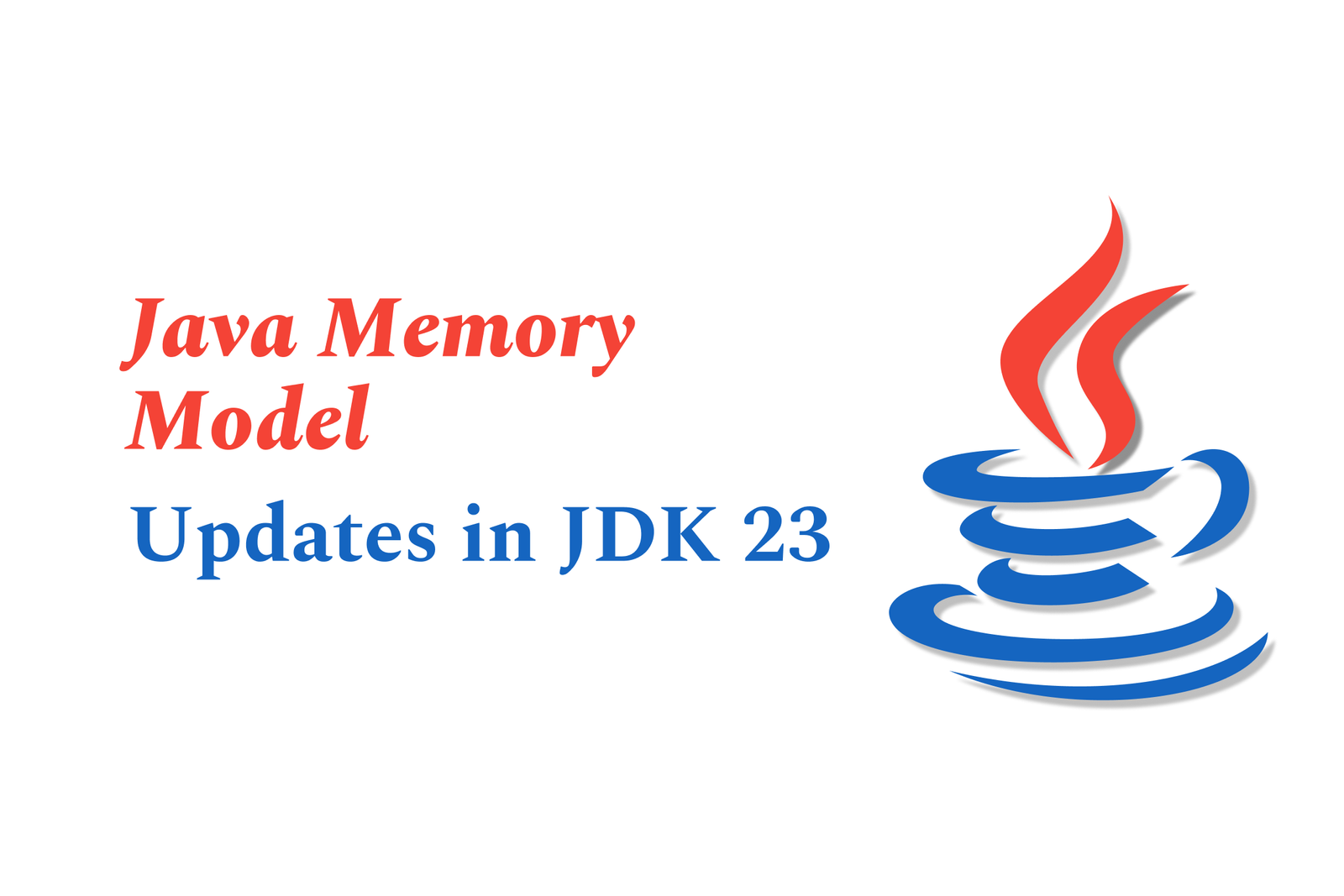Java Memory Model Updates in JDK 23
JDK 23 enhances the Java Memory Model by fully supporting primitive types in pattern matching, improving type safety and memory visibility. It also introduces modular import declarations, making modular programming clearer and more consistent with memory semantics.
Java Memory Model Updates in JDK 23
1 ) Overview of JDK 23 Updates
JDK 23 introduces various language preview features and enhancements that improve Java's expressiveness and modularity. While the release notes cover a broad range of changes, the updates to the Java Memory Model (JMM) focus on better support and consistency for pattern matching primitives and modular imports.
2 ) Pattern Matching Enhancements with Primitive Types
Primitive types are now fully supported in pattern matching contexts such as `instanceof` checks and `switch` expressions/statements. This means pattern matching works seamlessly with all primitive types.
This update simplifies coding by allowing developers to use type patterns for primitives directly, enhancing type safety and expression clarity.
Check out JEP 455 for details on these preview features including clauses like “When Clauses,” and support for record patterns with primitives.
3 ) Module Import Declaration Preview
The introduction of module import declarations allows developers to import all packages exported by a module succinctly.
This feature makes modular programming more convenient and encourages library reuse without forcing all imported code to be part of a module.
See JEP 476 for further specification.
4 ) Other Related Language and JVM Updates
While not directly a JMM update, features such as flexible constructor bodies (JEP 482 ) allow improved constructor logic that indirectly influences object state initialization and memory visibility.
The implicit declaration of classes and instance main methods (JEP 477 ) simplify beginner programming experience but also ensure better memory consistency for initializations.
5 ) Withdrawn and Deferred Features
Notably, String Templates have been withdrawn from JDK 23 due to unresolved design concerns, and hence, no impact on the JMM from this feature in this release.
6 ) Summary
JDK 23 enhances Java’s type system and module system with better support for primitives in pattern matching and easier module imports, contributing to clearer, safer, and more modular code. These enhancements also positively affect aspects of the Java Memory Model by providing more predictable and consistent primitives handling in pattern contexts, which is crucial for memory visibility and concurrency correctness.
For detailed technical specifications and API changes, consult JEP 455, JEP 476, and the Java SE 23 Release Notes.
https://justacademy.in/news-detail/java-backend-development-trends-you-can?t-ignore
https://justacademy.in/news-detail/ai-in-flutter:-smarter-ux-and-features
https://justacademy.in/news-detail/ios-19-performance-enhancements-explained
https://justacademy.in/news-detail/how-react-native-helps-build-high-performance-apps
https://justacademy.in/news-detail/best-ci/cd-tools-for-flutter-projects
Related Posts
In 2025, top Angular libraries offer modern, feature-rich components and tools for building dynamic web apps. From powerful data grids to low-code platforms like UI Bakery, these libraries enhance development speed, UI design, and scalability, making them essential for Angular developers.
Migrating from AngularJS to Angular 17 involves gradually upgrading your app by running both frameworks together using tools like ngUpgrade, rewriting components in TypeScript, and adopting Angular’s modern architecture to enhance performance, maintainability, and long-term support.
Angular state management tools help organize and handle app data efficiently, improving scalability and maintainability. Popular options include NgRx for robust, RxJS-based patterns, and newer Signal Store solutions that offer simpler, reactive approaches integrated tightly with Angular’s latest features.
RxJS in Angular empowers developers to manage asynchronous data streams with powerful operators like `forkJoin`, `combineLatest`, and `zip`. Mastering these key operators in 2025 is essential for building efficient, reactive applications that handle complex event sequences seamlessly.
Angular performance optimization in 2025 focuses on improving app speed and responsiveness by using techniques like OnPush change detection, lazy loading, efficient data caching, and AOT compilation. These practices reduce load times, enhance user experience, and ensure scalable, fast Angular applications.
In 2025, Angular remains preferred for large-scale, enterprise apps with its robust, all-in-one framework, while Vue attracts developers seeking simplicity and fast development for smaller projects. Both frameworks excel, with choice driven by project needs and team expertise.
Angular Signals are a new reactive primitive in Angular 16 that enable fine-grained, efficient change detection by automatically tracking dependencies and updating only affected parts of the UI. They simplify state management and boost app performance, revolutionizing Angular's reactivity model.
Angular interview questions to prepare in 2025 focus on core concepts like components, directives, data binding, routing, and dependency injection, along with TypeScript mastery and latest Angular features to ensure strong practical knowledge for building scalable, efficient web applications.
AngularJS reached its official end of support in January 2022, meaning no further updates or security patches. To ensure app security and performance, developers should consider migrating to modern Angular versions or seek third-party long-term support options if immediate migration isn’t possible.
The Angular Roadmap 2025 highlights upcoming features focused on improving developer experience and performance, including zoneless Angular, Signals integration, enhanced Forms, async data handling, improved HMR, and expanded Angular Material/CDK enhancements, driving modern, efficient web app development.










